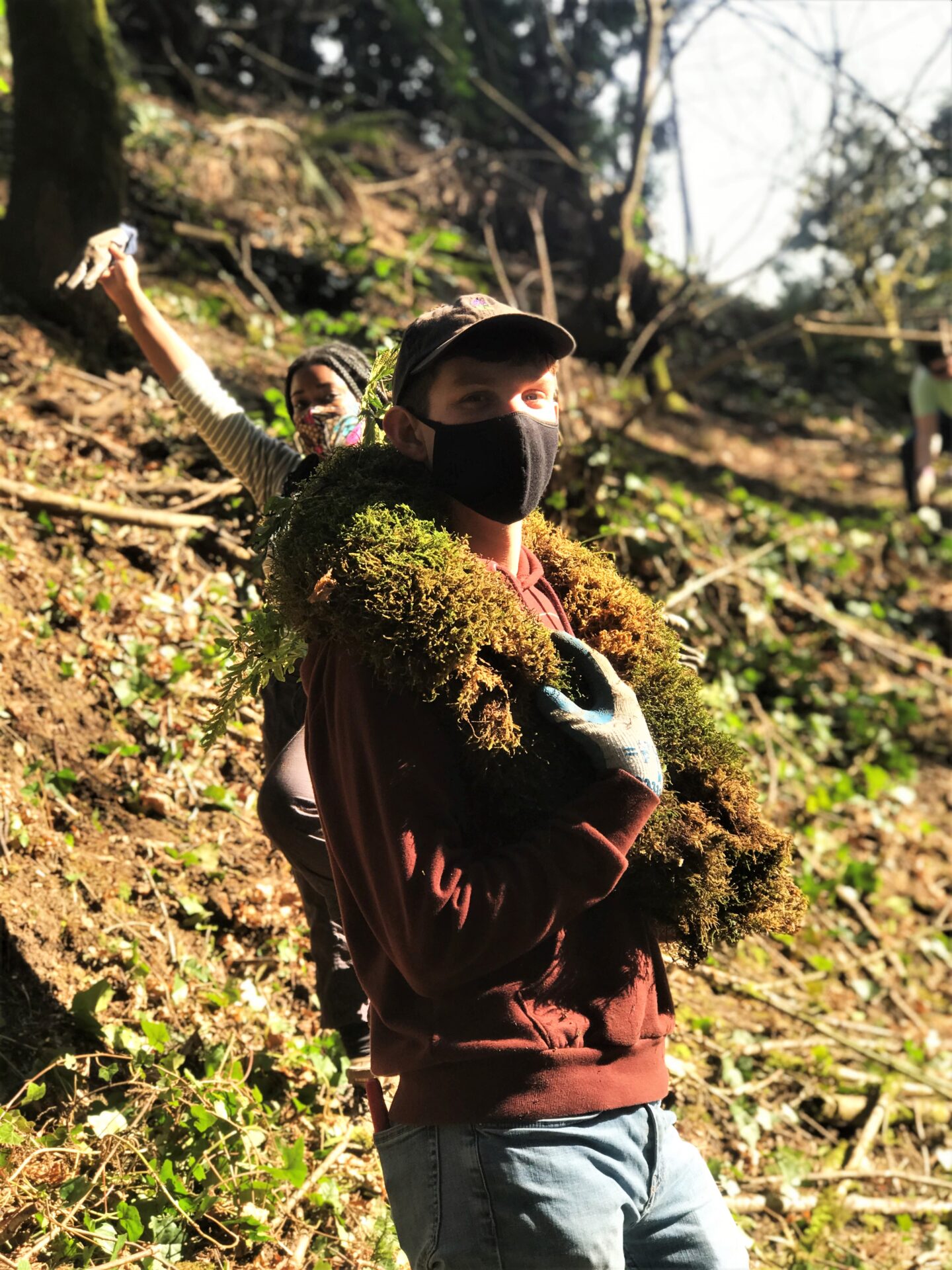
The local species of English and Irish ivy in Portland have long reigned as one of the most invasive plants in the area. You can often spot it around campus covering the forest ground, or even climbing and suffocating some of the larger trees. For College Outdoors (CO), the fight against ivy has been a long-standing staple among the various activities they conduct at Lewis & Clark..
In partnership with the Tryon Creek Watershed Council, CO joined a collective that focuses primarily on the restoration of native plants within the Portland area. The council itself has previously interacted with the college, and this year some LC students hold executive positions on their board. It is the promising reputation of the CO program all across Portland that has granted them unique access to such opportunities. On Saturday, March 13, the program led an initiative with a group of students who ventured around campus to aid in the process of eradicating the invasive ivy and preserving the native plants that reside around campus. In order to do this, the students uprooted the ivy from the ground and placed them into burn piles that LC landscaping would later take care of.
According to trip co-leader Qwynci Bowman ’23, who also holds the title of Executive Board Member on the Tryon Creek Watershed Council, this was a significant project, despite the menial tasks were completed by her group.
“I think the most important thing that we can take away is that even small scale action can create a large scale impact.” Bowman said.
This COVID-safe trip became an all-encompassing experience, from a history lesson to efficient gardening practices. Bowman, along with trip co-leaderLauren Simms ’21, not only taught their group of students the proper technique to remove the ivy, but also gave them the opportunity to learn more about the different species of ivy that exist all over Portland. English and Irish ivy grow around campus, both of which were seemingly introduced to the west coast during the colonial period, and have since grown to become a serious nuisance to Portland environmentalists. The local species are often overrun by the ivy and choked out of accessing necessary nutrients
The ivy itself is one tough cookie. The plant extends its and creates a complex maze underground. One group realized this very quickly as they were excavating the areas they had been assigned, pulling pieces that were more than 15-20 feet long. The work itself was an exciting and experience, and Bowman was very proud of her group’s accomplishments at the end of the day.
“I think that when you’re standing in a field of ivy it might look like a huge task and it might seem like it’ll never end or it’ll never improve but I think it’s important to recognize that even though we did get only a few spots on Saturday, there was a clear clearing of the ivy and we did make an impact on the restoration process that was happening across Portland,” Bowman said.
If you are interested in hearing more about CO, their connections to the Tryon Creek Watershed Council or are curious about their program, you can contact them via email at outdoors@lclark.edu.
Subscribe to the Mossy Log Newsletter
Stay up to date with the goings-on at Lewis & Clark! Get the top stories or your favorite section delivered to your inbox whenever we release a new issue.

Leave a Reply